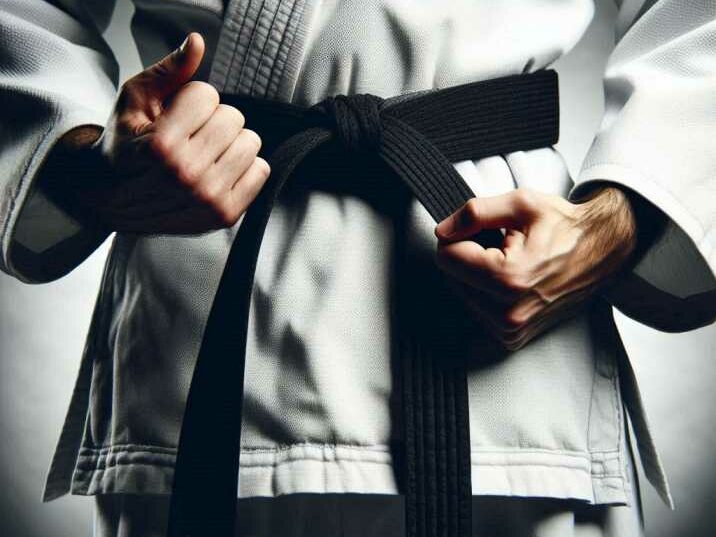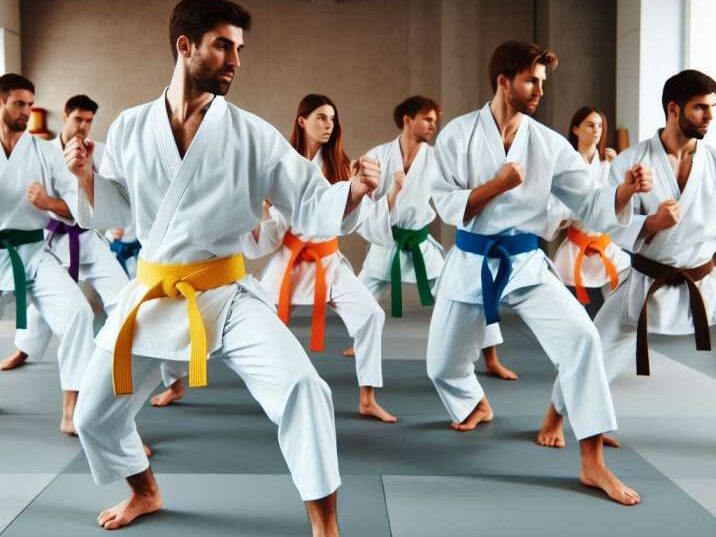Table of Contents
Table of Contents
- Introduction
- History of the Black Belt
- Significance of the Black Belt in Martial Arts
- Requirements and Progression
- Differences Across Martial Arts Disciplines
- Notable Black Belt Practitioners
- Myths and Misconceptions
- The Journey After Achieving a Black Belt
- Resources for Further Learning
Introduction
Have you ever wondered what it takes to achieve the highest belt in martial arts? For many, the black belt represents the pinnacle of skill, discipline, and dedication. But what does earning a black belt mean across different martial arts disciplines? In this comprehensive guide, we’ll explore the significance of the black belt in martial arts, its various levels, and how martial artists earn this coveted rank. Whether you’re a beginner or an experienced practitioner, you’ll gain valuable insights into the world of black belts.

The Journey to the Black Belt
What is a Black Belt?
A black belt in martial arts is often seen as a symbol of mastery. However, it’s more than just a piece of cloth. Achieving a black belt signifies high skill, knowledge, and commitment. It’s a lifelong journey that begins with the basics and evolves into a profound understanding of martial arts principles.
Historical Background
The concept of the black belt originated in Japan with Jigoro Kano, the founder of Judo. In 1883, Kano introduced the belt system to rank practitioners, with black representing a high level of proficiency. This system was later adopted by other martial arts, such as Karate and Taekwondo.
Different Martial Arts, Different Paths
Each martial art has its path to the black belt. In Karate, for example, practitioners must pass a series of rigorous tests that assess their technique, form, and knowledge. In Brazilian Jiu-Jitsu (BJJ), earning a black belt in martial arts can take up to 10 years of dedicated training.
The Grading System
Belt Colors and Their Meanings
Martial arts use a variety of belt colors to signify different levels of expertise. Generally, students start with white belts and progress through yellow, orange, green, blue, brown, and finally, black. Each color represents a stage of growth and learning.

Degrees of Black Belt
Reaching the black belt in martial arts is not the journey’s end. Many martial arts have additional degrees or “dans” within the black belt rank. For instance, in Taekwondo, there are nine degrees of black belt, each requiring years of training and contribution to the art.
Testing and Promotion
Testing for a black belt involves a combination of physical demonstrations, written exams, and sometimes, teaching evaluations. The criteria vary by discipline, but the goal is to ensure that the practitioner embodies the spirit and technique of the martial art.
Significance of the Black Belt in Martial Arts
Symbol of Achievement
A black belt in martial arts is a powerful symbol of personal achievement. It represents years of hard work, perseverance, and dedication. Earning a black belt in martial arts is a milestone that forever marks a practitioner’s martial arts journey.
Beyond Physical Skills
While the physical skills required for a black belt in martial arts are significant, the rank also emphasizes mental and spiritual growth. Martial artists are expected to demonstrate qualities such as humility, respect, and integrity.
Contribution to the Community
Black Belt in Martial Arts often takes on leadership roles within their martial arts communities. They teach, mentor, and inspire others. Their experience and wisdom contribute to the growth and sustainability of the martial art.
Popular Martial Arts and Their Black Belts
Karate
Karate, a Japanese martial art, has a well-established belt system. The black belt in Karate signifies advanced knowledge of techniques, kata (forms), and kumite (sparring). There are ten degrees of black belt in traditional Karate.
Taekwondo
In Taekwondo, a Korean martial art, the black belt is awarded after mastering various kicking techniques, forms, and self-defense strategies. The highest rank is the 9th-degree black belt, reserved for grandmasters.
Brazilian Jiu-Jitsu
Brazilian Jiu-Jitsu (BJJ) has one of the most rigorous paths to the black belt. It focuses on ground fighting and submissions. Earning a BJJ black belt can take over a decade, and there are six degrees within the black belt rank.
Judo
Judo, created by Jigoro Kano, uses the dan ranking system. The black belt in Judo is awarded after demonstrating proficiency in throws, holds, and grappling techniques. Higher degrees require significant contributions to Judo, such as teaching and competition success.
Steps to Achieve a Black Belt in Martial Arts
Commitment and Consistency
The first step towards a black belt is consistent training. Regular practice helps build muscle memory, improve techniques, and develop discipline. Setting a training schedule and sticking to it is crucial.
Find a Reputable Dojo
Choosing the right dojo or training center is essential. Look for schools with experienced instructors, a positive learning environment, and a focus on both physical and mental development.
Set Short and Long-Term Goals
Setting goals keeps you motivated and focused. Short-term goals might include mastering a particular technique, while long-term goals could be progressing through belt ranks. Tracking your progress helps maintain momentum.
Challenges and Overcoming Them
Physical Demands
Training for a black belt in martial arts is physically demanding. It requires strength, endurance, and flexibility. Incorporating cross-training, such as cardio and strength exercises, can help improve overall fitness.
Mental Barriers
Mental challenges, such as self-doubt and fear, are common. Developing a positive mindset, practicing mindfulness, and seeking support from instructors and peers can help overcome these barriers.
Balancing Life and Training
Balancing martial arts training with other life commitments can be challenging. Time management and prioritization are key. Communication with family and work about your goals can also provide the support needed to succeed.
Benefits of Achieving a Black Belt in Martial Arts
Increased Confidence
Achieving a black belt boosts confidence. The skills and knowledge gained provide a sense of accomplishment and self-assurance, which can translate to other areas of life.
Improved Health and Fitness
The physical training involved in martial arts improves cardiovascular health, strength, and flexibility. It also promotes mental well-being through stress relief and increased focus.
Lifelong Learning and Growth
Earning a black belt is not the end but a new beginning. It opens up opportunities for further learning, teaching, and contributing to the martial arts community. The pursuit of excellence continues.
Getting Started with Martial Arts
Starting a martial arts journey can be both exciting and daunting. To make the process smoother, consider the following steps:
Research and Choose a Martial Art
You can start by researching different martial arts to find one that matches your interests and goals. Disciplines like Karate, Taekwondo, Judo, and Brazilian Jiu-Jitsu each have unique techniques, traditions, and focuses. Some prioritize striking, while others emphasize grappling or self-defense.
Find a Reputable School
Once you’ve selected a martial art, look for a reputable school or dojo. Visit potential schools, observe classes, and meet the instructors. Ensure the school has qualified instructors, a positive atmosphere, and a clear curriculum.
Invest in the Right Gear
Depending on your chosen martial art, you may need specific gear such as uniforms (gi), belts, gloves, or protective equipment. Invest in quality gear that will last and provide adequate protection during training.
Set Realistic Goals
Set clear, achievable goals to keep you motivated. Whether it’s attending classes regularly, mastering a specific technique, or participating in a competition, having goals will help track your progress and keep you focused.
Stay Consistent and Patient
Consistency is vital in martial arts training. Attend classes regularly and practice outside of class to improve your skills. Be patient with yourself; progress can be slow, but perseverance will lead to success.
Embarking on your martial arts journey is a commitment to personal growth, discipline, and learning. By taking these initial steps, you’ll be well on your way to enjoying the many benefits martial arts has to offer.
Conclusion
Achieving a black belt in martial arts is a remarkable accomplishment that signifies mastery, dedication, and growth. Whether you’re just starting your martial arts journey or are already on your way, understanding the significance of the black belt can inspire and motivate you. Remember, the path to a black belt is as important as the belt itself. Keep training, stay committed, and enjoy the lifelong benefits of martial arts.
Are you ready to take the next step in your martial arts journey? Join our community and start training with experts who can guide you towards your black belt dreams. Register today and be part of a tradition that transforms lives.
FAQs
What is the highest belt in martial arts?
The highest belt in most martial arts is the black belt, with additional degrees or dans signifying advanced levels of expertise.
How long does it take to earn a black belt?
The time required varies by martial art and individual commitment. It can take anywhere from 3 to 10 years or more.
Are all black belts the same across martial arts?
No, the criteria and significance of a black belt vary by martial art. Each discipline has its own standards and ranking system.
Can children earn black belts?
Yes, many martial arts offer junior black belts for children, which differ from adult black belts in terms of requirements and responsibilities.
What should I look for in a martial arts school?
Look for experienced instructors, a positive and supportive environment, a clear curriculum, and a focus on both physical and ethical training.
—


